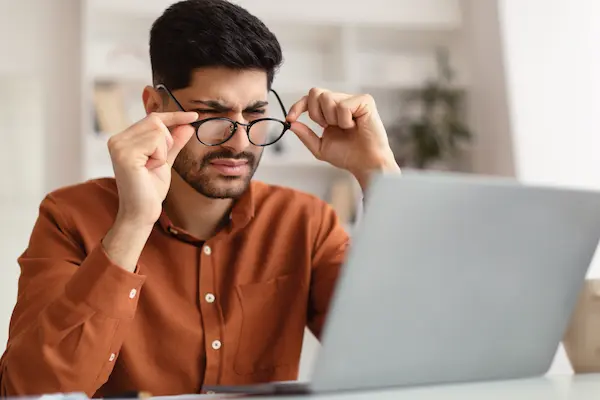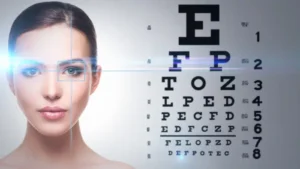Nearsightedness Myopia: Overview
Do you find it difficult to see objects at a distance, like signs on the road, but have no trouble reading up close? This is a common experience for individuals with nearsightedness myopia. Myopia affects a significant part of the population, and it is typically manageable with glasses, contact lenses, or eye surgery.
Myopia Causes
The root cause of nearsightedness myopia lies in the eye’s structure. Myopia occurs when the eyeball grows too long or the cornea, the eye’s outer protective layer, is overly curved. This results in light focusing in front of the retina rather than directly on it, causing distant objects to appear blurry. This type of visual disturbance is known as a refractive error.
Myopia Risk Factors
While anyone can develop nearsightedness myopia, certain factors increase the risk:
- Family History: If one or both parents are nearsighted, the likelihood of developing myopia increases.
- Prolonged Close-Up Activities: Tasks that require focusing on close objects for extended periods, like reading or detailed craftsmanship, may lead to myopia.
- Screen Time: Long hours spent looking at screens, especially in young people, have been linked to an increased risk of myopia.
- Limited Outdoor Exposure: Spending less time outside appears to be associated with a higher risk of developing nearsightedness.
Myopia Symptoms
Symptoms of nearsightedness myopia typically include:
- Blurry vision when looking at distant objects
- Frequent headaches
- Squinting to see clearly
- Eye strain and fatigue, especially after trying to focus on far-off objects
Children may also exhibit signs such as squinting, blinking frequently, sitting close to screens, or struggling to read words on a distant board at school.
Types of Myopia
There are two main types of myopia: pathological and non-pathological.
- Simple Myopia (Non-Pathological): This common form of myopia often begins in childhood or adolescence and typically stabilizes in adulthood. Vision correction, such as glasses or contacts, usually restores clear vision.
- Degenerative Myopia (Pathological): A more severe form that often worsens over time and can lead to complications such as retinal detachment and glaucoma. Vision correction may be less effective in advanced stages, and additional medical interventions may be required.
Bilateral Myopia
Myopia can affect one eye or both eyes. When both eyes are nearsighted, it is referred to as bilateral myopia.
Myopia Diagnosis
Diagnosing nearsightedness myopia involves a simple eye exam. During this exam, an eye doctor assesses your vision using an eye chart or a specialized device called a phoropter to determine the appropriate lens strength for corrective eyewear.
- Nearsighted Test: The doctor will test your distance vision using a Snellen chart to identify any refractive error.
- Phoropter Test: This exam helps determine the lens prescription needed to correct myopia.
Myopia vs. Hyperopia
Hyperopia (farsightedness) is the opposite of myopia. With hyperopia, distant objects are apparent, but close-up objects appear blurry. While both are refractive errors, they affect vision in different ways.
Myopia and Astigmatism
Astigmatism can accompany nearsightedness myopia. It results from an irregularly shaped cornea, leading to blurred vision at all distances. Corrective lenses or surgery can treat both myopia and astigmatism.
Here you like Multifocal Contact Lenses: What They Are (Pros & Cons)
Myopia Treatment
Correcting nearsightedness myopia typically involves lenses that adjust how light enters the eye, allowing for clear focus on the retina.
- Eyeglasses: The simplest method to correct myopia, especially for children and adolescents, is using concave lenses.
- Contact Lenses: Based on personal preference and prescription, rigid or soft contact lenses may also be used to correct myopia.
- Refractive Surgery: Surgical options like LASIK, PRK, or ICL (Implantable Collamer Lens) can permanently correct vision by reshaping the cornea or inserting a lens to focus light correctly on the retina.
For high myopia, special contact lenses or eye drops like atropine may slow progression. In advanced cases, other surgical options, such as clear lens replacement, may be recommended.
Can Myopia Be Cured?
There is no cure for myopia, but treatments effectively restore or significantly improve vision. Corrective surgery like LASIK can offer lasting vision improvements, though age-related changes might still require adjustments.
Does Myopia Get Better Over Time?
Myopia typically stabilizes in early adulthood but doesn’t resolve on its own. Eye drops, multifocal lenses, and healthy habits can slow progression, particularly in younger individuals.
When to See Your Doctor
Routine eye exams are crucial for early detection and management of nearsightedness myopia. For adults over 40, a comprehensive eye exam every few years is recommended, with annual check-ups after age 65.
Seek immediate medical attention if you experience sudden floaters, light flashes, or a shadow over your field of vision, as these may indicate retinal detachment.
By combining Chinese Eye Rolling Exercises with evidence-based vision care strategies, many people seek to ease symptoms of Nearsightedness Myopia. For an authoritative reference, check the National Eye Institute’s myopia.
Myopia Complications
Untreated nearsightedness myopia can lead to:
- Academic difficulties due to uncorrected vision issues
- Decreased quality of life if vision impairs daily activities
- Increased risk for eye strain and headaches
- Potential for additional eye conditions like glaucoma and cataracts, especially with high myopia
Living with Myopia
Adopting eye-friendly habits can help manage nearsightedness myopia:
- Schedule regular eye exams
- Protect eyes from bright sunlight
- Take screen breaks every 20 minutes by focusing on distant objects
- Maintain overall health through diet and exercise
Takeaways
Nearsightedness myopia is a common condition that affects the ability to see distant objects clearly. With options ranging from corrective lenses to surgical treatments, individuals with myopia can achieve improved vision and maintain eye health.




